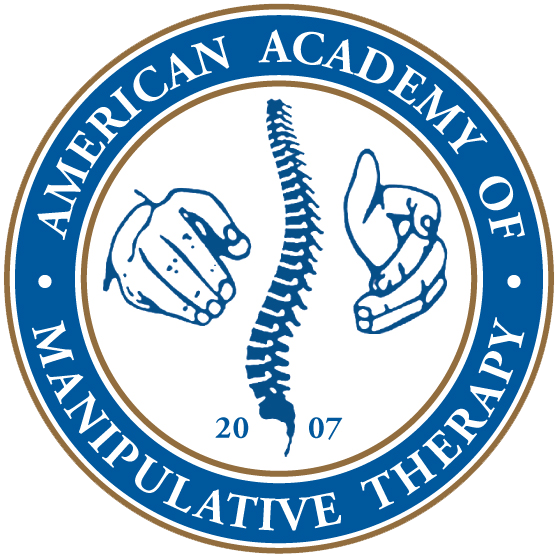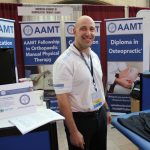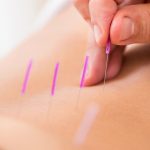Dry Needling, Acupuncture & Exercise for Adhesive Capsulitis: Evidence & Practice Guidelines
Adhesive capsulitis, or “frozen shoulder”, affects 2-5% of the general population.1-3 Individuals with adhesive capsulitis are typically between 40 and 60 years old, and women seem to suffer from the condition more than men (1.4 females for every 1 male).3, 4 While symptoms can last up to 30 months,5 several studies have reported that approximately 40% of individuals with adhesive capsulitis continue to experience symptoms beyond 3 years.6 Moreover, within 5 years of the first episode, 15% of individuals go on to develop adhesive capsulitis in the contralateral shoulder.4
CATEGORIES OF ADHESIVE CAPSULITIS
Adhesive capsulitis can be divided into two categories, primary and secondary. Primary adhesive capsulitis is idiopathic in nature and is characterized by diffuse capsular fibrosis and inflammation;4, 7 whereas, secondary adhesive capsulitis describes the condition when it appears to have resulted from an underlying pathology or injury.7 Interestingly, the disorder most closely associated with adhesive capsulitis is diabetes mellitus, as 20% of diabetics will suffer from adhesive capsulitis.8 Other endocrine disorders associated with adhesive capsulitis include hyperthyroidism, hypothyroidism and hypoadrenalism.9
ETIOLOGY OF ADHESIVE CAPSULITIS
Although adhesive capsulitis was originally considered “periarthritis” of the shoulder,10 Dr. Julius Neviaser conducted a series of histological studies and surgical examinations of individuals with the condition in 1945, and subsequently reported a “thickening and contraction of the capsule which becomes adherent to the humeral head.”10, 11 More recently and according to Kelley et al in 2013, adhesive capsulitis is characterized by diffuse shoulder pain and loss of motion in all directions, with external rotation being most restricted.12
The clinical course of adhesive capsulitis has been described as a progression through four stages.11, 12 Stage 1, the “acute pain” stage,11 lasts for 3 months and is characterized by pain at end range of motion, pain at rest and difficulty sleeping. Arthroscopic examination reveals capsular synovitits without adhesions or contracture.12 Stage 2 typically lasts 3-9 months and is commonly referred to as the “freezing” stage.12 In this stage, pain results in a progressive loss of motion in all planes. Arthroscopy reveals aggressive synovitis/angiogenesis and loss of range of motion under anesthesia.12 Stage 3, or the “frozen stage”, lasts 9-15 months with continued loss of motion and pain. While synovitis/angiogenesis decreases, the capsule and ligamentous structures undergo fibrosis, reducing the axillary pouch.12 During stage 4, the “thawing” stage, pain abates, range of motion returns, and arthroscopic findings show reduced synovial membrane irritation with continued capsuloligamentous fibrosis.12 Notably, range of motion restrictions may continue for several years.2
CONSERVATIVE TREATMENT OF ADHESIVE CAPSULITIS
While a number of treatments for adhesive capsulitis have been proposed, little agreement exists on the most appropriate interventions to minimize the pain, disability and duration of the condition.7 Notably in 2004, Diercks and Stevens asserted, “supervised neglect yields better outcomes than intensive physical therapy and passive stretching in patients with frozen shoulder.”13 In 2015, Ali and Khan reported exercise and manual therapy, including Maitland grade II and III mobilizations, are equally as effective as exercise alone in managing the symptoms associated with adhesive capsulitis.14 However, an earlier study found “aggressive physical therapy” in the acute pain stage reversed adhesions and expanded the joint space capacity.15 Additionally, a 2014 study by Park et al suggested that a combination of intensive mobilization (i.e. passive end-range Maitland and/or Kaltenborn mobilizations to the glenohumeral joint), capsular distension, and a single steroid injection may be the optimal treatment strategy for decreasing inflammation, increasing joint space and improving range of motion in patients with stage 1 or 2 adhesive capsulitis.6
Importantly, adhesive capsulitis seems more responsive to physical therapies and injections during the early stages—i.e. stages 1 and 2; therefore, accurate diagnosis in the first weeks to months may be critical to patient outcomes. Clinicians should pay attention to early loss of range of motion, particularly loss of active and passive glenohumeral external rotation, in lieu of the more common rotator cuff pathology.12, 15 In addition to loss of active and passive shoulder external rotation, shoulder elevation, and ‘hand-behind-the-back’ movements, patients with adhesive capsulitis (as opposed to shoulder impingement syndrome) tend to experience more severe tenderness to palpation over the anteroinferior glenohumeral capsule, more generalized or global aching around the whole shoulder, and more nocturnal awakening due to pain.
Nevertheless, given the overlap in symptoms between early adhesive capsulitis and shoulder impingement syndrome,12 there is potential for misdiagnosis, especially by a primary care medical physician that may not use manual palpation, examine active and passive shoulder range in various planes, or assess ‘end-feel’ during osteokinematic and arthrokinematic motion testing . As a result, physical therapists must be prepared to treat adhesive capsulitis in the more difficult to manage later stages. Consequently, a stage-based treatment approach may be most appropriate with the level of ‘tissue irritability’ being an important consideration in the management strategy.11
When tissues are ‘highly’ irritable (i.e. high pain levels at rest and during movement, constant resting pain, pain before end range resistance, active range significantly less than passive range of motion), treatments for adhesive capsulitis should likely focus on pain modulation.11, 12 Specifically, electrical stimulation, low grade nonthrust joint mobilizations (e.g. Maitland grades I and II) with limited dosage, and relatively pain free—i.e. minimal discomfort—passive and active range of motion exercises are recommended.12
For periods of ‘moderate’ tissue irritability (i.e. moderate pain levels, intermittent resting pain, pain and resistance coming on together at end range, active and passive range of motion are similar), treatment intensity should gradually increase with low dosages of nonthrust glenohumeral joint mobilizations into resistance (e.g. Maitland grades III and IV), myofascial stretching exercises, and scapulohumeral neuromuscular re-education for overall shoulder girdle mobility. Once tissues have reached a ‘low’ level of irritability (no resting pain, mild pain with overpressure at end range), clinicians should begin incorporating more aggressive treatments to restore active and passive range of motion in all six planes, including higher dosages of end-range nonthrust joint mobilizations (e.g. Maitland grades III and IV), low load sustained myofascial stretching exercises (with mild or moderate pain intensity levels being acceptable), and continued facilitation for normal scapulothoracic and scapulohumeral mechanics.12
‘DRY NEEDLING’ FOR ADHESIVE CAPSULITIS
Dry needling by physical therapists has gained tremendous popularity over the past decade for treating a variety of musculoskeletal disorders,16-18 including nonspecific shoulder pain, subacromial impingement, rotator cuff pathology and shoulder osteoarthritis. According to a 2016 literature review by Butts et al,19 dry needling leads to a number of central and peripheral changes that decrease pain and inflammation,20, 21 increase range of motion22, 23 and initiate tissue changes,24-26 to include the deactivation of myofascial trigger points.18 Given that adhesive capsulitis is characterized by pain, inflammation and decreased range of motion secondary to capsular fibrosis and per-articular myofascial restrictions, in addition to traditional nonthrust joint mobilizations and sustained low load stretching exercises, dry needling may be a valuable adjunct for treating the condition.
During the “acute pain” stage of adhesive capsulitis, dry needling may be administered to provide analgesia via the release of endogenous opioids,27, 28 serotonin,29 norepinephrine,29 nociceptin/orphanin30, 31 and adenosine,32, 33 which could, in turn, provide a greater therapeutic window for the practitioner to deliver other physical therapies that would normally be too painful.
To our knowledge, only one published study has investigated the use of ‘dry needling’ (as opposed to ‘acupuncture’ in the title and methods section) for adhesive capsulitis.34 In a case study of a single patient with adhesive capsulitis, Clewley et al introduced dry needling on the third treatment session to trigger points in the ipsilateral upper trapezius muscle utilizing a pistoning technique with the goal of eliciting a localized twitch response.34 According to the Clewley et al, “dry needling was performed to target these trigger points, with the goal of decreasing pain associated with them.”34 Immediately after the first dry needling treatment session, the authors reported the pain at end-range dropped from a 4/10 to a 0/10. By the fifth treatment, disability had improved from 68 to 23 points on the Quick DASH, which is certainly greater than the minimum clinically important difference (MCID) of 8 points.34 Nevertheless, this a single case study of just one patient encounter; furthermore, a number of recent systematic reviews have questioned the ability of clinicians to accurately and reliably locate trigger points with manual palpation with inter-examiner agreement rates as low as 21% and error rates of 3.3 cm to 6.6 cm between examiners for the specific location of the trigger point in the upper trapezius muscle.35, 36 Moreover, a 2017 systematic review reported poor inter-examiner reliability and uncertain intra-examiner reliability for identifying trigger points in muscles with manual palpation.37
‘ACUPUNCTURE’ FOR ADHESIVE CAPSULITIS
While the terminology, philosophy and theoretical constructs differ between Western-based dry needling and traditional Chinese acupuncture, the procedure of inserting monofilament needles is similar.18 Notably, the ‘acupuncture’ literature on musculoskeletal disorders has in large part been published by physical therapists and medical physicians in the UK and Germany; therefore, this broader body of evidence should also be considered when determining the optimal use of needles without injectate for adhesive capsulitis. Interestingly, there seems to be a significant overlap in traditional acupoints used to treat adhesive capsulitis and the pathoanatomical structures related to the condition. According to Tukmachi, traditional acupoints commonly used in the management of adhesive capsulitis include: GB21 (upper trapezius), LI15 (distal teno-osseous insertion of the supraspinatus), LI14 (distal aspect of the middle deltoid), TE14 (superior and posterolateral aspect of the glenohumeral joint between the middle and posterior deltoid) and SI9 (in line with the posterior axillary crease over teres major).38, 39 In addition, SI10 (in line with the posterior axillary crease and inferior to the posterolateral acromion over the infraspinatus musculotendinous junction), SI11 (infraspinatus belly) and SI12 (supraspinatus belly) are also commonly used throughout the ‘acupuncture’ literature for the treatment of adhesive capsulitis.40
Bokhari and Zahid reported significant reductions in muscle spasms and improvements in shoulder range of motion following electroacupuncture to the rotator cuff muscles of the affected joint and the region near the long head of the biceps tendon close to the intertubercular sulcus (i.e. a deep grove on the anterior surface over the upper end of the humerus separating the surface of the lesser and greater tubercles).41 In a another randomized control trial, Cheing et al utilized three acupoints in patients with adhesive capsulitis: (1) one trigger point in the shoulder, (2) one local point at LI15 (near the teno-osseous insertion of the supraspinatus), and (3) one distal point at the classical ST38 (middle of lower leg within the tibialis anterior muscle).2 The needles were manipulated (i.e. rotation) until a de qi response (i.e. deep pressure, dull ache, heaviness, distention, spreading, warmth42) was reported. Strong but tolerable electrical stimulation, with an alternating frequency of 2–100 Hz and a pulse duration of 100–400 μs, was then applied to the 2 needles at the shoulder for 20 minutes.2 After ten sessions of electroacupunture, Cheing et al reported a 31.5% improvement in shoulder function and a 46.5% decrease in pain scores.2 Notably, for most musculoskeletal conditions, electroacupuncture has been found to give greater reductions in pain and disability than manual acupuncture.43
Certainly, the insertion of needles in the tibialis anterior for adhesive capsulitis fits more within the theoretical framework of traditional Chinese acupuncture rather than Western medicine. However, it is perhaps worth noting that needle insertions into the tibialis anterior, particularly at ST38, are frequently reported in the acupuncture literature as part of the management of adhesive capuslitis.38 For example, Pothmann et al reported 70-80% improvement in shoulder mobility after 10 minutes of strong needle stimulation at ST38.44 In a more recent study of individuals with adhesive capsulitis, Sun et al reported significantly greater improvements in pain, function and range of motion in the exercise and acupuncture group (2 sessions per week for 6 weeks) compared to the exercise alone group.45 Nevertheless, 4 of the 5 needle insertions were in the contralateral tibialis anterior and one needle insertion was in ST35 on the contralateral side (i.e. lateral infrapatellar sulcus of the knee)!45
CONCLUSIONS
There is are no controlled trials that have investigated the effectiveness of dry needling in individuals with adhesive capsulitis; however, several randomized controlled trials have found electroacupuncture alone, or electroacupuncture in conjunction with exercise, does provide meaningful improvements in shoulder pain and function in patients with adhesive capsulitis. For the management of adhesive capsulitis, varying dosages of nonthrust joint mobilization, sustained low load myofascial stretching, and supervised and/or home exercise programs have been regarded as the standard of care in physical therapy.12 However, in addition to conventional physical therapy, the use of penetrating, instrument-assisted soft-tissue mobilization therapies (i.e. manual acupuncture or electroacupuncture) appears to enhance patient outcomes.2, 15, 18, 34, 45, 46
AUTHORS:
Dr. Justin Loss, DPT, Cert. SMT, Cert. DN, Dip. Osteopractic
Fellow-in-Training, AAMT Fellowship in Orthopaedic Manual Physical therapy
Senior Physical Therapist, ATI Physical Therapy, Chapel Hill, NC
Dr. Raymond Butts, DPT, PhD, MSc, Dip. Osteopractic, MAACP (UK)
Senior Faculty, AAMT Fellowship in Orthopaedic Manual Physical Therapy
Member, Acupuncture Association of Chartered Physiotherapists (UK)
Atlanta, GA
Dr. James Dunning, DPT, MSc, FAAOMPT, Dip. Osteopractic, MMACP, MAACP (UK)
Director, AAMT Fellowship in Orthopaedic Manual Physical Therapy
Member, Acupuncture Association of Chartered Physiotherapists (UK)
Member, Manipulation Association of Chartered Physiotherapists (UK)
Montgomery, AL
REFERENCES:
- Wolf JM, Green A. Influence of comorbidity on self-assessment instrument scores of patients with idiopathic adhesive capsulitis. J Bone Joint Surg Am. 2002;84-A(7):1167-73.
- Cheing GL, So EM, Chao CY. Effectiveness of electroacupuncture and interferential eloctrotherapy in the management of frozen shoulder. J Rehabil Med. 2008;40(3):166-70.
- Niel-Asher S. HS, Bentley S., Reynolds J. . Adhesive capsulitis: prospective observational multi-center study on the Niel-Asher techniques (NAT). Int J Osteo Med. 2014;17:232e42.
- Seth A. Thawing the frozen shoulder. InnovAiT: Education and inspiration for general practice. 2014;7(7).
- Reeves B. The natural history of the frozen shoulder syndrome. Scand J Rheumatol. 1975;4(4):193-6.
- Park SW, Lee HS, Kim JH. The effectiveness of intensive mobilization techniques combined with capsular distension for adhesive capsulitis of the shoulder. J Phys Ther Sci. 2014;26(11):1767-70.
- D’Orsi GM, Via AG, Frizziero A, Oliva F. Treatment of adhesive capsulitis: a review. Muscles Ligaments Tendons J. 2012;2(2):70-8.
- Tighe CB, Oakley WS, Jr. The prevalence of a diabetic condition and adhesive capsulitis of the shoulder. South Med J. 2008;101(6):591-5.
- Dias R, Cutts S, Massoud S. Frozen shoulder. BMJ. 2005;331(7530):1453-6.
- Page P, Labbe A. Adhesive capsulitis: use the evidence to integrate your interventions. N Am J Sports Phys Ther. 2010;5(4):266-73.
- Neviaser AS, Hannafin JA. Adhesive capsulitis: a review of current treatment. Am J Sports Med. 2010;38(11):2346-56.
- Kelley MJ, Shaffer MA, Kuhn JE, Michener LA, Seitz AL, Uhl TL, et al. Shoulder pain and mobility deficits: adhesive capsulitis. J Orthop Sports Phys Ther. 2013;43(5):A1-31.
- Diercks RL, Stevens M. Gentle thawing of the frozen shoulder: a prospective study of supervised neglect versus intensive physical therapy in seventy-seven patients with frozen shoulder syndrome followed up for two years. J Shoulder Elbow Surg. 2004;13(5):499-502.
- Ali SA, Khan M. Comparison for efficacy of general exercises with and without mobilization therapy for the management of adhesive capsulitis of shoulder – An interventional study. Pak J Med Sci. 2015;31(6):1372-6.
- Mao CY, Jaw WC, Cheng HC. Frozen shoulder: correlation between the response to physical therapy and follow-up shoulder arthrography. Arch Phys Med Rehabil. 1997;78(8):857-9.
- Liu L, Huang QM, Liu QG, Ye G, Bo CZ, Chen MJ, et al. Effectiveness of dry needling for myofascial trigger points associated with neck and shoulder pain: a systematic review and meta-analysis. Arch Phys Med Rehabil. 2015;96(5):944-55.
- Pavkovich R. The use of dry needling for a subject with chronic lateral hip and thigh pain: a case report. Int J Sports Phys Ther. 2015;10(2):246-55.
- Dunning, J, Butts R, Mourad F, Young I, Flannagan S, Perreault T. Dry Needling: a Literature Review with Implications for Clinical Practice Guidelines. Physical Therapy Reviews. 2014;19(4):252-265.
- Butts R, Dunning J, Perreault T, Maurad F, Grubb M. Peripheral and Spinal Mechanisms of Pain and Dry Needling Mediated Analgesia: A Clinical Resource Guide for Health Care Professionals. International Journal of Physical Medicine and Rehabilitation. 2016;4(2):1-18.
- Zhang R, Lao L, Ren K, Berman BM. Mechanisms of acupuncture-electroacupuncture on persistent pain. Anesthesiology. 2014;120(2):482-503.
- Silva JR, Silva ML, Prado WA. Analgesia induced by 2- or 100-Hz electroacupuncture in the rat tail-flick test depends on the activation of different descending pain inhibitory mechanisms. J Pain. 2011;12(1):51-60.
- Osborne NJ, Gatt IT. Management of shoulder injuries using dry needling in elite volleyball players. Acupunct Med. 2010;28(1):42-5.
- Koppenhaver S, Embry R, Ciccarello J, Waltrip J, Pike R, Walker M, et al. Effects of dry needling to the symptomatic versus control shoulder in patients with unilateral subacromial pain syndrome. Man Ther. 2016;26:62-9.
- Goldman N, Chandler-Militello D, Langevin HM, Nedergaard M, Takano T. Purine receptor mediated actin cytoskeleton remodeling of human fibroblasts. Cell Calcium. 2013;53(4):297-301.
- Langevin HM, Churchill DL, Cipolla MJ. Mechanical signaling through connective tissue: a mechanism for the therapeutic effect of acupuncture. FASEB J. 2001;15(12):2275-82.
- Langevin HM, Churchill DL, Fox JR, Badger GJ, Garra BS, Krag MH. Biomechanical response to acupuncture needling in humans. J Appl Physiol (1985). 2001;91(6):2471-8.
- Su TF, Zhang LH, Peng M, Wu CH, Pan W, Tian B, et al. Cannabinoid CB2 receptors contribute to upregulation of beta-endorphin in inflamed skin tissues by electroacupuncture. Mol Pain. 2011;7:98.
- Zhang GG, Yu C, Lee W, Lao L, Ren K, Berman BM. Involvement of peripheral opioid mechanisms in electroacupuncture analgesia. Explore (NY). 2005;1(5):365-71.
- Zhang Y, Zhang RX, Zhang M, Shen XY, Li A, Xin J, et al. Electroacupuncture inhibition of hyperalgesia in an inflammatory pain rat model: involvement of distinct spinal serotonin and norepinephrine receptor subtypes. Br J Anaesth. 2012;109(2):245-52.
- Fu X, Wang YQ, Wang J, Yu J, Wu GC. Changes in expression of nociceptin/orphanin FQ and its receptor in spinal dorsal horn during electroacupuncture treatment for peripheral inflammatory pain in rats. Peptides. 2007;28(6):1220-8.
- Carpenter KJ, Vithlani M, Dickenson AH. Unaltered peripheral excitatory actions of nociceptin contrast with enhanced spinal inhibitory effects after carrageenan inflammation: an electrophysiological study in the rat. Pain. 2000;85(3):433-41.
- Goldman N, Chen M, Fujita T, Xu Q, Peng W, Liu W, et al. Adenosine A1 receptors mediate local anti-nociceptive effects of acupuncture. Nat Neurosci. 2010;13(7):883-8.
- Takano T, Chen X, Luo F, Fujita T, Ren Z, Goldman N, et al. Traditional acupuncture triggers a local increase in adenosine in human subjects. J Pain. 2012;13(12):1215-23.
- Clewley D, Flynn TW, Koppenhaver S. Trigger point dry needling as an adjunct treatment for a patient with adhesive capsulitis of the shoulder. J Orthop Sports Phys Ther. 2014;44(2):92-101.
- Wolfe F, Simons DG, Fricton J, Bennett RM, Goldenberg DL, Gerwin R, et al. The fibromyalgia and myofascial pain syndromes: a preliminary study of tender points and trigger points in persons with fibromyalgia, myofascial pain syndrome and no disease. J Rheumatol. 1992;19(6):944-51.
- Sciotti VM, Mittak VL, DiMarco L, Ford LM, Plezbert J, Santipadri E, et al. Clinical precision of myofascial trigger point location in the trapezius muscle. Pain. 2001;93(3):259-66.
- Rathbone AT, Grosman-Rimon L, Kumbhare DA. Interrater Agreement of Manual Palpation for Identification of Myofascial Trigger Points: A Systematic Review and Meta-Analysis. Clin J Pain. 2017.
- Tukmachi E. Frozen shoulder: a comparison of western and traditional chinese approaches and a clinical study of its acupuncture treatment. Acupuncture in Medicine. 1999;17(1):9-21.
- Liu H, Zhang C. 60 cases of shoulder-arm syndrome treated by electroacupuncture at Bingfeng (SI 12). J Tradit Chin Med. 1998;18(4):256-8.
- Jin D, Li Z. Acupuncture and the elevation manipulation of massage for treatment of frozen shoulder. J Tradit Chin Med. 2003;23(3):212-3.
- Bokhari S, Zahid S. Treatment of Frozen Shoulder. Journal of Postgraduate Medical Institute (Peshawar – Pakistan), North America, 23, Jul. 2011.
- Kong J, Gollub R, Huang T, Polich G, Napadow V, Hui K, et al. Acupuncture de qi, from qualitative history to quantitative measurement. J Altern Complement Med. 2007;13(10):1059-70.
- Langevin HM, Schnyer R, MacPherson H, Davis R, Harris RE, Napadow V, et al. Manual and electrical needle stimulation in acupuncture research: pitfalls and challenges of heterogeneity. J Altern Complement Med. 2015;21(3):113-28.
- Pothmann R., Stux G., Weigel A. Frozen Shoulder:differential acupuncture therapy with point ST38. American Journal of Acupuncture 1980; 8(1): 65-9.
- Sun KO, Chan KC, Lo SL, Fong DY. Acupuncture for frozen shoulder. Hong Kong Med J. 2001;7(4):381-91.
- Mintken PE, Glynn P, Cleland JA. Psychometric properties of the shortened disabilities of the Arm, Shoulder, and Hand Questionnaire (QuickDASH) and Numeric Pain Rating Scale in patients with shoulder pain. J Shoulder Elbow Surg. 2009;18(6):920-6.







